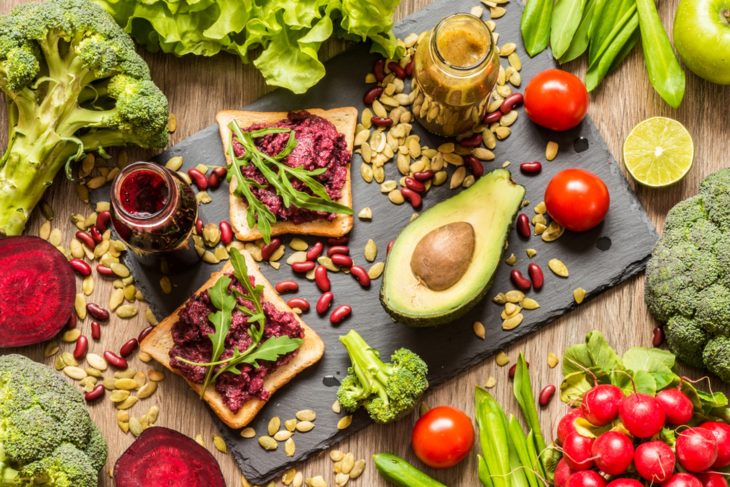In the domain of nutrition and health supplements, nanotechnology applications may help with acquiring precise spatial data about the area of a supplement or bioactive nourishment part in a tissue, cell, or cell segment. Ultrasensitive discovery of supplements and metabolites, just as expanding comprehension of supplement and biomolecular collaborations in explicit tissues, has gotten conceivable. In principle, such innovations can improve wholesome appraisal and proportions of bioavailability. They may assist with recognizing and portray atomic focuses of supplement action and biomarkers of impact, presentation, and powerlessness and, in this manner, may likewise illuminate “customized” sustenance.
Explicit uses of nanotechnology to date in nourishment and sustenance include changing taste, coloring, and the surface of food sources; identification of nourishment pathogens and deterioration microorganisms; improving sustenance nature of food sources; and novel vehicles for supplement conveyance, just as filling in as a device to empower further clarification of supplement digestion and physiology. For instance, one nourishment innovation application includes making coatings for food sources and nourishment bundling that fill in as hindrances to microorganisms or that contain extra supplements.
Definition and Applications of Nanotechnology
Nanotechnology is a word that is being widely used in circles and conversations about high-tech devices. But it is important to understand what nanotechnology and nanotechnology applications are. It is a science that focuses on manipulating matter at a very small level – the molecular and atomic level. The work is done on a scale so small that it is virtually impossible to see under a regular microscope. This scale is known as the nanoscale. Using this science, molecules and atoms can be manipulated in such a way that many advanced materials can be produced that are not only fascinating but also surprisingly useful. The best example that can be cited for the use of this technology is carbon nanotubes.
The uses of this tube are varied because of its unique ability to be nearly a hundred times stiffer than steel and only one-sixth the weight of steel. To make this tube, a graphite molecular sheet is rolled into a tube and its molecules are oriented in such a way that it acquires the aforementioned inherent properties.

Source: health
Wholesome items professing to utilize nanotechnology are now accessible in the market. Recognize that the potential lethality of supplements can be influenced by an adjustment in molecule size. Besides, little is thought about the retention and discharge of nanoparticles by test creatures or in people. Therefore, there are difficulties with the use of nanoscale contrasted and microscale materials. These incorporate higher presentation per unit mass; little size: large surface zone proportion; various courses of introduction because of littler size (for example dermal infiltration); diverse appropriation to tissues by ideals of their distinctive size or surface covering, science, or molecule charge; and novel properties of a nanoscale material that may adjust ingestion, assimilation, digestion, or discharge in the body.
Readers may note that the inclusion of nanostructures in nourishment items is not new. One model is the casein micelles in milk; they have consistently existed in milk and are liable for the high steadiness of lipids in milk at the nanoscale. The nanoscale measurement of materials shows extraordinary favorable circumstances when contrasted and small scale and macro scale. The effect of the nanoscale (for example 100,000,000 lower than the meter; for instance, a piece of the paper presents a thickness of roughly 100,000 nanometers) in materials and frameworks are connected with their large surface region to-volume proportion prompting improved surface zone, unmistakable optical conduct, compound and active dependability, and low thickness versus high mechanical properties.

Source: Food Navigator
These favorable circumstances over the smaller scale and macroscale lead to a high enthusiasm for use in the nourishment business – which can bring a few focal points, for example, improved solvency, bioavailability and sensorial conduct – can be utilized to forestall unwanted substance responses and ensure practical mixes against concoction corruption, and evade similarity issues among fixings and the nourishment lattice. Over the most recent couple of years, the advantages of applying nanotechnology have been driving the improvement of new and elite materials for the nourishment segment, and in this way, the applications at laboratory yet in addition on a modern scale have exponentially expanded.
Over the most recent two decades, the number of distributions and licenses grew 40% and 90%, respectively3. These numbers show the potential and enthusiasm of specialists and organizations of utilizing nanotechnology in the nourishment part and the high capability of using nanotechnology-based items in a few nourishment procedures and applications. Also, a number of organizations centering their innovative work with nanotechnology-based things are more than 1,000 – a figure that ought to develop in the following years.
Examining electron microscopy pictures of a,) whey protein isolate based cases got through electrospraying and b) lactoferrin-based nanocapsules got through nanospraydrier, saw at 5,000x amplification with a scale bar of 20μm

Source: soyummy
Nanotechnology offers an extraordinary number of changes to the farming and nourishment industry, for example, the rural and essential creation part could profit by the utilization of pesticides with improved activity (for example utilization of nanoemulsions in their scattering); creature takes care of with upgraded adequacy and higher nourishment esteem (for example nanoencapsulation for proteins and amino acids security during the ruminants absorption process); analytic of creature sickness, or for the discovery of pathogens in water (for example shrewd sensor). In the nourishment business, predominantly during the handling, plan, bundling, and delivery, nanotechnology offers numerous other potential advantages for purchasers and makers. In nourishment handling the utilization of films with nanoporous and a high surface territory can be specific infiltration forms during the partition of mixes.
The immobilization of catalysts in nanosized frameworks can likewise upgrade their proficiency, strength, and reuse, and in this way, diminish the expense of the procedure. Other potential methods for utilizing nanotechnology in nourishment preparation are the utilization of nanoscale structures to acquire new textural properties in food sources, using nanofibrillar and totaled proteins, and by the crystallization of atoms being able to ensnare oils in their nanosized crystalline structures. This can help in the decrease of material required, change the optical properties, and the control of rheological conduct by affecting temperature, pH, and compounds.
In the ingredient sector, nanotechnology is still more generally utilized in supplements. In any case, nanoencapsulation could be utilized to ensure delicate mixes — like nutrients, minerals, cancer prevention agents, and polyunsaturated unsaturated fats — so they could be conveyed just when they arrive at the gut. That would improve how they are consumed by the body, and diminish their effect on an item’s taste and appearance.

Source: Mother Nature Network
Conveying the advantages of nanotechnology in nourishment is as yet one of the business’ most significant difficulties, and some state it is easing back advancement in the segment. In any case, with various applications covering everything from improved sanitation to better nourishment, decreased nourishment squander, and biodegradable bundling, it is unavoidable that buyers will begin to see more nanoscale mixes in purchaser items in the coming years.
Scientific awareness ought to be elevated among stakeholders to lessen the hazard observation related to nanotechnology in nourishments, and right now, the job of administrative associations, the scholarly community, and the industry is significant. They should cooperate in showing the customers the points of interest and wellbeing of utilizing nanotechnology in nourishment items so as to build the acceptance of nanotechnology-based items.
If you are thinking about collaborating nutrition and nanotechnology, contact to MaxVeraWellness and share your details.
